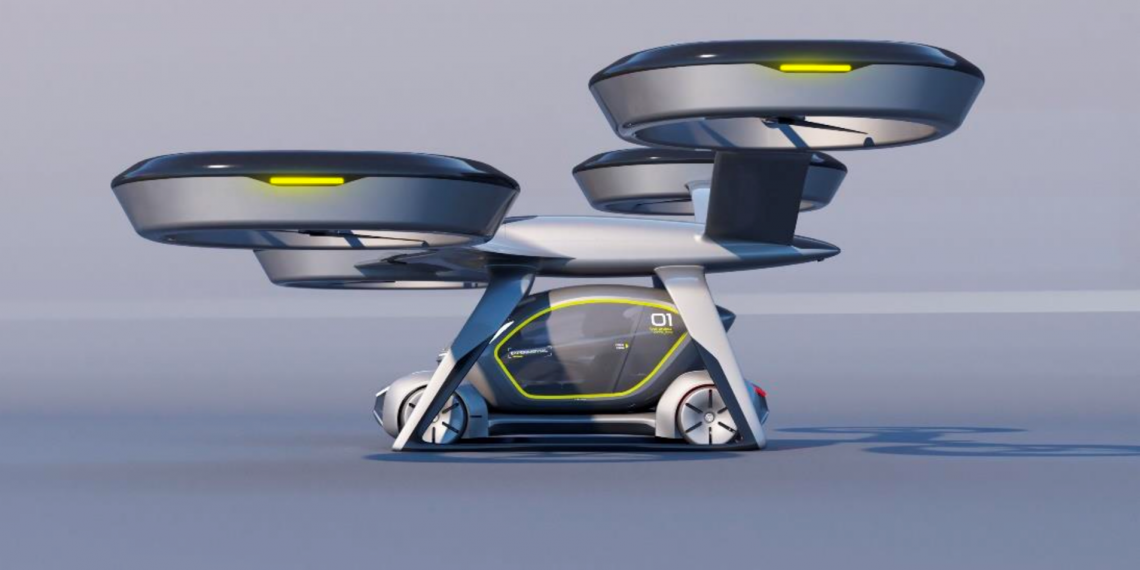The goal of the FLY.PT mobilising project was to combine land and air mobility. In this project, aimed at revitalising the aeronautical industry, INESC TEC developed a multimodal perception system and an algorithm that meets users’ needs.
INESC TEC joined this endeavour to explore the idea of a “flying car”, which avoids setbacks in urban environments and opens new horizons for the mobility of the future; the institution also contributed to the FLY.PT mobilising agenda with technology based on Artificial Intelligence (AI) techniques.
FLY.PT aimed to develop a prototype of a new transportation system, combining an autonomous electric vehicle with an autonomous aerial vehicle through the coupling/decoupling of a passenger compartment, simultaneously allowing horizontal and vertical mobility.
The project recently presented the cabin mockup: a passenger cabin, attachable to both the drone and the car. The team also carried out flight tests with the prototype, in Ponte de Sôr (next to the aerodrome), towards boosting the aeronautics industry.
INESC TEC’s contributions were a crucial aspect to said tests. Rafael Claro, researcher at INESC TEC (robotics and autonomous systems) mentioned that “we have developed a multimodal perception system that has considerably improved the robustness of real-time detection and location of the cabin, using AI techniques”. The introduction of this technology led to “highly accurate drone module landings”. Moreover, the coupling with the car is smoother.
The project also featured the development of an algorithm that optimises the drone route according to the 3D mapping of the coverage provided by existing 4G/5G networks. This solution allows to address “the real communication needs of users on board”.
“The introduction of this technology led to different levels of Quality of Service and respective optimised routes to users before starting their journey”, explained Hélder Fontes, researcher at INESC TEC. Hence, users on board – and even without access to the internet – can choose the shortest (and potentially cheapest) route calculated by the algorithm, while maintaining minimum communications for the operation of the vehicle.
INESC TEC researchers Andry Maykol Pinto, Filipe Ribeiro, Francisco Neves, Helder Fontes, Nuno Almeida, Rafael Claro, and Rui Campos were involved in this project.
INESC TEC’s participation in this project was promoted by the TEC4 team, namely TECPARTNERSHIPS. The FLY.PT project, led by TEKEVER UAS, is co-funded by the COMPETE 2020 Programme under the Research and Technological Development Stimulus Systems (Mobilising Programmes), involving an eligible investment of €8.2M – which resulted in an ERDF incentive of close to €5.7M.
The researchers mentioned in this news piece are associated with INESC TEC and FEUP.




 News, current topics, curiosities and so much more about INESC TEC and its community!
News, current topics, curiosities and so much more about INESC TEC and its community!